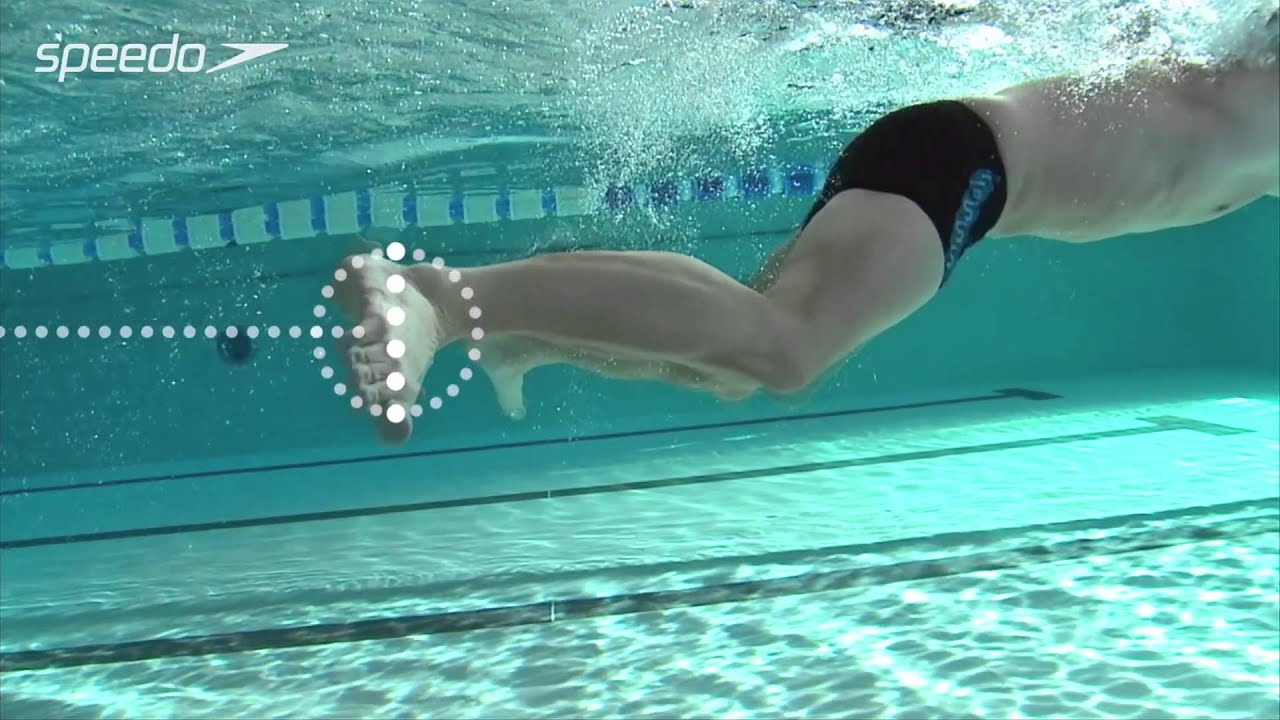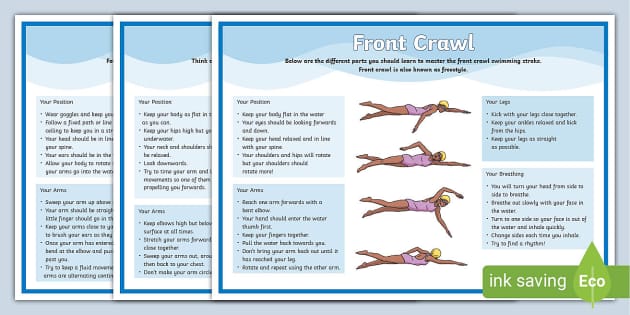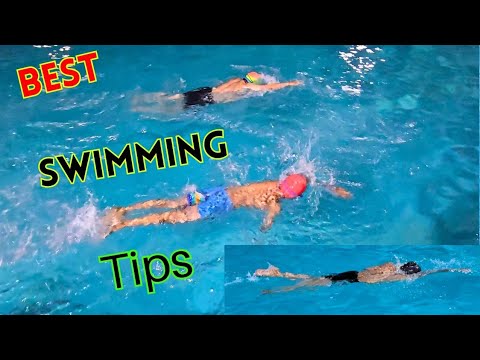Welcome to the exciting world of deep water swimming! Whether you're looking to improve your skills for safety, competition, or pure enjoyment, understanding how to swim confidently in deeper waters is essential. Deep water presents its own set of challenges, but with the right techniques and mindset, you can master it. Remember, deep water isn't just about the absence of the ground; it’s about feeling comfortable and secure while having fun in the water. So, let’s dive in and explore the foundations!
Essential Swimming Techniques for Deep Water

Swimming in deep water can be intimidating at first, but with the right techniques, you can become more confident and capable. Here are some essential swimming techniques you should practice:
- Floatation Skills: Before tackling any strokes, it's important to get comfortable with floating. Practice lying on your back and stomach to understand your buoyancy. Spread your arms and legs wide to maintain balance.
- Breathing Techniques: Learning how to breathe correctly is crucial. In deep water, you can’t just put your feet down if you need to take a breath. Practice inhaling through your mouth and exhaling through your nose while swimming. This helps to keep your rhythm smooth and steady.
- Kick Fundamentals: A strong kick is vital for propulsion in deep water. Practice the flutter kick by keeping your legs straight and kicking from the hips. Ensure your toes are pointed, and your feet do not break the surface too much.
- Arm Movements: When it comes to strokes, mastering the arm movements is key. For freestyle, alternate your arms while keeping your body streamlined. For breaststroke, push your arms out in a circular motion while keeping your head low to minimize resistance.
- Body Position: Keep your body as flat as possible in the water. A horizontal position reduces drag and helps you swim more efficiently. Your hips should be near the surface, allowing for better movement through the water.
When you're in deep water, it's also essential to stay aware of your surroundings and potential hazards, so here are a couple of practical tips:
- Stay Calm: If you ever feel anxious, focus on your breathing and remind yourself of your skills. Panic can make things worse, but staying calm allows you to assess your situation and respond appropriately.
- Practice, Practice, Practice: The more time you spend in the water, the more comfortable you will become. Try to incorporate deep water practices into your routine, whether it’s during leisure swims or structured training sessions.
Remember, everyone progresses at their own pace. Be patient with yourself and allow time for improvement. Deep water swimming can be thrilling and liberating once you master these essential techniques. Happy swimming!
Also Read This: How to Make Coffee with Milk at Home: Simple Recipe on Dailymotion
3. Safety Tips Before Swimming in Deep Water

Before diving into the deeper waters, let’s make sure you stay safe! Swimming in deep water can be a thrilling experience, but it comes with its own set of challenges and risks. Here are some essential safety tips to keep in mind:
- Assess Your Skill Level: Know your swimming proficiency. If you’re not comfortable in deep water, it’s a sign to work on your skills in shallower areas first.
- Use a Buddy System: Never swim alone, especially in deep water. Having a buddy ensures that help is available in case of an emergency.
- Wear a Life Jacket: If you’re a beginner or unsure, wearing a life jacket can provide extra support and peace of mind while you acclimate yourself to deeper water.
- Understand Water Conditions: Before jumping in, check the water conditions. Be aware of currents, waves, and temperature. It’s important that the conditions are safe for swimming.
- Know Your Limits: If you feel tired or out of breath, it’s perfectly okay to call it a day. Pushing yourself too far can lead to fatigue and accidents.
- Warm Up: Just like any physical activity, warming your muscles up is essential. Get your body ready for swimming with some light stretching and exercises.
- Stay Hydrated: Though you’re in the water, it’s easy to forget about hydration. Drink plenty of water before and after swimming, especially in the heat.
- Have a Plan: Always have a plan for your swimming session. Know where you’ll swim, how long you’ll stay, and establish check-in points with your buddy.
By following these safety tips, you can enjoy a more secure and pleasurable time in deep water. Remember, safety should always be your top priority!
Also Read This: How to Make Coffee in a Coffee Maker: Quick Tutorial on Dailymotion
4. Step 1: Mastering Breathing Techniques

Ready to take the plunge into deep water? One of the most crucial skills you’ll need to master before anything else is your breathing technique. Proper breathing can significantly improve your comfort and efficiency while swimming. Let's break it down step-by-step!
Practice Diaphragmatic Breathing: This technique involves using your diaphragm rather than your chest. Here’s how to do it:
- Find a comfortable and quiet space to practice.
- Lie on your back or sit up straight, placing one hand on your chest and the other on your stomach.
- Breathe in deeply through your nose, aiming to fill your lungs and expand your abdomen while keeping your chest still.
- Exhale slowly through your mouth, feeling your abdomen contract.
Repeat this process for a few minutes daily until it becomes second nature. Now let’s take it to the water!
Breathing While Swimming: As you swim, it’s essential to coordinate your breathing with your movements. Here are some key pointers:
- Inhale through Your Mouth: When your face is in the water, inhale through your mouth quickly just before rotating your head to the side. This will allow you to quickly take in air without disrupting your stroke.
- Exhale in the Water: While your head is in the water, exhale through your nose. This practice prevents water from entering your nose and helps you breathe rhythmically.
- Timing is Key: Work on finding a natural rhythm for your strokes and breaths. For example, for every two strokes, take a breath on the third.
Finally, practice breathing drills regularly. You can start by just swimming a few lengths of the pool and focusing solely on your breathing. With time, you’ll find that you feel more comfortable and confident in the water. Remember, mastering this technique is a vital step to safely enjoying deep water swimming!
Also Read This: Learn to Make a Pineapple Cream Cake: Video Guide on Dailymotion
5. Step 2: Improving Your Floating Skills

Once you’re comfortable in shallow water, it’s time to tackle floating. Floating is one of those essential skills that builds your confidence and keeps you safe in deep water. Think of it as getting cozy in the water rather than fighting against it. Here’s how to improve your floating skills step by step:
Start in Shallow Water: Begin in a place where you can stand comfortably. This lets you practice relaxing without the fear of sinking. Sit on the pool floor, take a deep breath, and lay back until your body is parallel to the surface. It might feel a bit strange, but trust me; you’ll get the hang of it!
Body Positioning: When floating, your body should be straight, with your head back and your hips up. Think of it like lying on a bed of clouds. Here’s a quick checklist for your position:
- Head tilted slightly back, looking up to the sky (or the water surface).
- Chest relaxed and slightly lifted.
- Hips and legs floating; imagine you’re a starfish!
As you practice floating, be mindful of your breath. Remember, the more you relax and inhale deeply, the better you'll float. It’s all about keeping that body position stable.
Experiment with Arms and Legs: Once you feel secure, try adjusting your arm and leg positions. Spread your arms wide like a bird in flight and let your legs float naturally. You can also try bringing your knees slightly bent. These small adjustments can dramatically change your buoyancy and stability.
Feeling nervous about flipping over? No worries! If you do, simply roll back and relax. Floating should feel like a gentle embrace by the water, not a struggle.
Practice, Practice, Practice: Don’t rush this skill. Float for a few minutes each session, gradually extending the time as you grow more comfortable. Celebrate small victories, like holding your position for just a few moments longer. It adds up and gives you amazing confidence as you progress toward deeper water!
Also Read This: The Ultimate Guide to Streaming on Dailymotion for Beginners
6. Step 3: Practicing Propulsive Movements
Now that you’re floating like a pro, it’s time to add some motion! Swimming is all about moving through water effectively. Propulsive movements are your keys to gliding through deeper water with ease. Here’s how to practice:
Understanding Propulsion: Think of propulsion as the force that moves you forward. In swimming, this is largely generated through your arms and legs. Let’s break it down into two main parts: arm strokes and leg kicks.
Arm Strokes: Start with the freestyle stroke, one of the most common swimming techniques. Follow these steps to try it:
- Extend one arm forward while the other arm is at your side, in the water.
- As you pull your arm back, rotate your torso slightly to engage your core.
- Kick your legs gently but consistently; think small, quick flicks just below the surface.
- Alternate arms with a natural rhythm and ensure each stroke pulls water back, not just downward.
Remember, it’s all about creating a balance between your arms and legs. Too much motion in one area can throw you off, so make sure to stay smooth and coordinated!
Leg Kicks: Kicking is crucial for maintaining momentum and proper body position. To practice effective kicking:
- Practice keeping your legs straight with just a slight bend at your knees.
- Kick from the hips, not the knees, which helps maintain a streamlined body position.
- Try doing slow kicks at first, then gradually introduce faster kicks as you find your rhythm.
Integrate Breathing: As you practice your strokes, don’t forget about breathing! Inhale during the arm lift and exhale as you pull your arm back. Breathing should be rhythmic like your strokes, so keep practicing to find a comfortable pattern.
With these steps, you'll not only build your propulsive movements but also truly enjoy your swimming experience. Keep at it, and soon enough, you’ll be gliding through deep water with confidence and ease!
Also Read This: How to Upload a Video to Dailymotion: A Detailed Guide for Users
7. Step 4: Learning Treading Water
Now that you've gotten comfortable with floating and basic swimming techniques, it’s time to tackle treading water. This skill is essential for staying afloat in deep water while conserving your energy. Treading water allows you to maintain your position without continuously swimming, which is crucial for safety. Let's break it down!
What is Treading Water?
Treading water involves a combination of arm and leg movements, allowing you to stay upright in the water. Think of it as a way to "swim" in place. You want to use your limbs to keep your head above water while remaining as calm as possible. Here’s how you can get started:
Basic Techniques:
- Leg Movement: Start with a flutter kick or a scissor kick. The flutter kick involves alternating your legs up and down, while the scissor kick is more horizontal, moving your legs outward and then back together like a pair of scissors.
- Arm Movement: Your arms play a crucial role in treading water. Use a circular motion, resembling a windmill, or push down with your arms to gain the necessary buoyancy.
- Breathe Steadily: Ensure you're breathing regularly as you tread. This enhances your stamina and calmness. Inhale through your mouth and exhale through your nose or mouth.
Practice Makes Perfect:
To get the hang of treading water, start in shallow water where you can stand if needed. Gradually move to deeper water. Here are some tips:
- Focus on your core: Engage your abdomen to help keep your balance.
- Keep your head above water: Look straight ahead, so you maintain an upright position.
- Relax your movements: Try not to panic when you feel tired; a steady pace will help you conserve energy.
With practice, you should be able to tread water effortlessly for extended periods, which is an invaluable skill for any swimmer. You will be more confident and capable of managing yourself in deep waters.
Also Read This: Tips for Unlocking a Lock Using a Pin with Dailymotion Videos
8. Step 5: Navigating and Turning in Deep Water
Now that you’re equipped with the skills of treading water and basic floating, it's time to focus on swimming techniques for navigating and turning in deep water. Mastering these skills enhances your swimming efficiency and safety, allowing you to travel confidently in open water.
Understanding Navigation:
Whether you’re swimming in a pool or the ocean, knowing how to navigate can save you energy and enhance your experience. Here’s how to effectively navigate in deep water:
- Maintain a Straight Path: Use your arms and legs to keep a straight line while swimming. Focus on the water’s surface and set your sights on a landmark or a point on the shore.
- Use Breathing Techniques: Every couple of strokes, turn your head to the side to breathe while keeping an eye on your navigation point. It helps maintain a straight line and prevents disorientation.
Turning Techniques:
Turning smoothly in deep water is vital, especially if you’re swimming in triangular courses or racing. Here are a couple of effective turning techniques:
- Open Turns: For open turns, approach the side of your destination and use a powerful kick to push off. Turn your body sideways to facilitate a fluid movement.
- Flip Turns: If you're feeling adventurous, try the flip turn—common in competitive swimming. As you approach the wall or your turning point, tuck into a ball and perform a quick flip to gain momentum before swimming away.
Practice these turns in shallow water first until you get comfortable. Remember to streamline your body for efficiency.
As you enhance your navigation and turning skills, you'll enjoy your swimming experience even more, feeling confident and agile in deep water!
Conclusion and Additional Resources on Swimming
In conclusion, mastering swimming techniques for deep water is essential for safety and enjoyment. As you practice the skills and techniques outlined in this guide, remember that consistency and patience are key. Here are some additional resources to further enhance your swimming capabilities:
- Swimming Classes: Consider enrolling in classes at your local pool where certified instructors can provide personalized feedback.
- Online Tutorials: Websites like YouTube and swimming-specific platforms offer a plethora of videos demonstrating swimming techniques.
- Books on Swimming: Literature such as "Total Immersion: The Revolutionary Way to Swim Better, Faster, and Easier" by Terry Laughlin can be invaluable.
- Swimming Apps: Apps like MySwimPro or Swim.com can help track your progress and provide training plans.
Additionally, joining a local swimming club or community can provide motivation and support as you work on your skills. Swimming with others can make the process enjoyable and allow you to learn from your peers.
Ultimately, with the right resources and dedication, you can confidently navigate deep water, ensuring a safe and wonderful experience in the water.
 admin
admin








